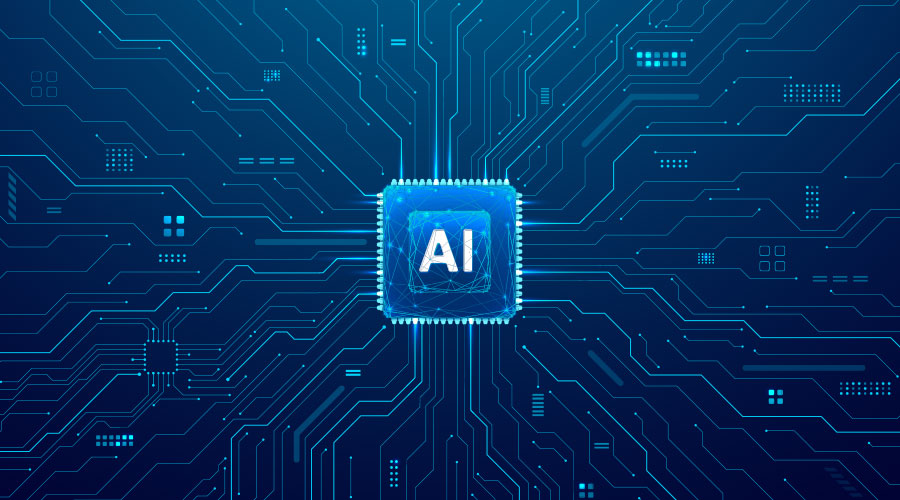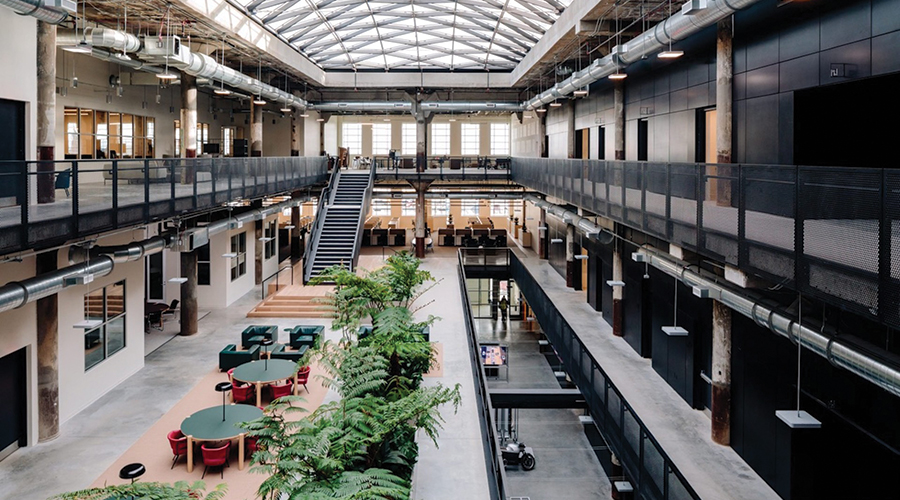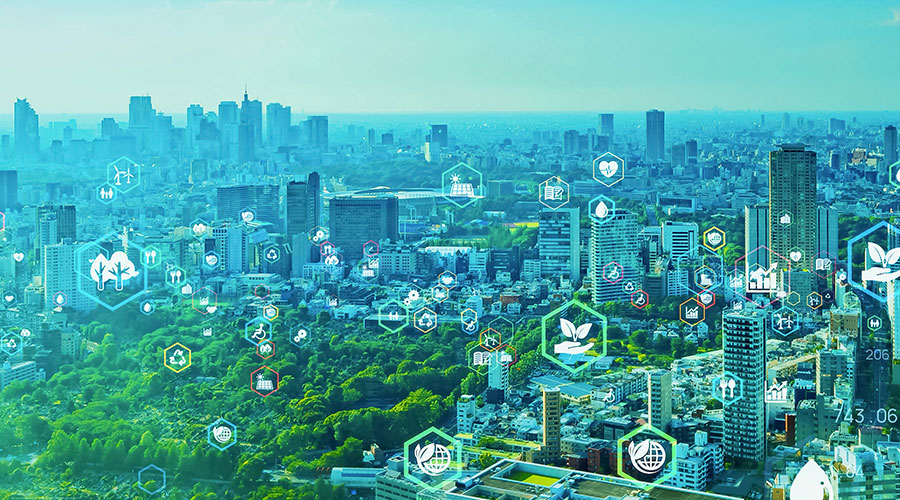Energy Efficiency During AI’s Takeover Without Breaking the Bank
Energy-as-a-service strategies and those that do not require capital expenditure can deliver guaranteed measurable performance, cost savings and incentives for facilities.
By Kevin Keenan, Contributing Writer
The world will spend $375 billion on artificial intelligence (AI) in 2025 and $500 billion in 2026, according to recent projections by the UBS Chief Investment Office. Amid the AI frenzy, investors will also spend more on AI data center construction than on traditional office spaces this year.
These data centers consume a tremendous amount of energy, and their demand is expected to grow: Global electricity demand from data centers is set to more than double by 2030 and more than quadruple for AI-powered data centers in the same time frame.
This surge in demand has affected the cost and availability of energy in certain areas of the country. For instance, New Jersey residents’ electricity bills spiked 17-20 percent this summer, largely due to new data centers in the region. The U.S. Department of Energy warned that blackouts could be 100 times more likely by 2030 as data center use grows.
In this climate, stakeholders are compelled to think creatively. Sustainable energy, both efficiency and procurement, was once nice to have. Now, rising utility costs, skyrocketing demand pass-throughs and client mandates have made it a necessity. Whether organizations are already feeling the strain or not yet seeing the impact, now is the time for leaders to get ahead.
To protect budgets and ensure long-term viability, leaders need to think differently. That means moving away from traditional approaches to energy-as-a-service (EaaS) strategies and those that do not require capital expenditure. These strategies deliver guaranteed measurable performance, cost savings and incentives for facilities.
Grid challenges
The rapid rise of AI has exposed vulnerabilities in the way the United States manages its energy infrastructure. When electricity demand is flat, organizations can treat energy as a relatively predictable line item. That era is over. As AI use surges, its strain on the energy grid is unlike anything seen before.
Even basic functions, such as an exchange with an AI chatbot like ChatGPT, draw at a minimum of 10 times the amount of energy as one Google search. These exchanges are happening at an astronomical scale. More than 190 million people use ChatGPT daily, resulting in more than 1 billion queries in 24 hours.
These queries depend on AI-optimized data centers, which can require as much electricity as a small city. This spike in energy consumption stands in stark contrast to the United States' previous electricity demand, which had remained relatively flat for about two decades before the introduction of AI.
Since then, the U.S. Energy Information Administration’s (EIA) Short-Term Energy Outlook has shown a steady rise in consumption in residential and commercial use cases. In fact, their calculations found that electricity consumption within the commercial electricity sector, which includes data centers, will increase by 3 percent this year and 5 percent in 2026 — numbers well above prior forecasts.
Electricity demand has reached a crisis point. Stakeholders need to treat efficiency as a strategic priority and begin to take steps to protect their sites from energy instability and skyrocketing costs.
Investing in alternative energy solutions is the only way to ensure resilience and minimize costs as AI development continues to accelerate and sap the energy grid. Traditional approaches to energy efficiency often require capital-intensive retrofits, such as replacing HVAC systems, upgrading lighting and installing advanced building controls through large-scale projects that necessitate years of planning and substantial upfront investment. For organizations already struggling with rising utility costs and unprecedented AI-driven demand, justifying those projects can be challenging, even if they would pay for themselves over time.
Financial alternatives
This is where EaaS emerges as a practical alternative. Instead of requiring stakeholders to provide capital upfront, EaaS shifts the financing and much of the operational risk to a third-party provider. The provider assumes the cost of improvements and is repaid through performance-based contracts tied directly to the energy savings achieved.
If the promised reductions do not materialize, the facility is not left holding the bill. Minimizing costs in these areas of the business also frees up capital and buys companies time to make their business model sustainable in the long term.
EaaS models are a cost-effective solution that increases energy efficiency while safeguarding profit margins, especially for tech companies making significant investments in AI. In the early phases of the AI revolution, many businesses have yet to see a total return on investment.
A recent MIT NANDA study found that 95 percent of participating organizations had no returns on their AI investment as of August 2025. Much of the expense comes from high operating costs and large-scale capital expenditure projects.
Still, spending on AI infrastructure is expected to exceed $7 trillion in the next decade, and the enthusiasm for AI has not abated. The Penn Wharton Budget Model recently reported that AI is expected to boost the GDP by 1.5 percent by 2035 and by nearly double that in the following decades.
As with energy efficiency, AI tools are long-term investments that will pay dividends in the long run. But stakeholders must determine ways to balance competing capital expenditures now. Alternative energy approaches, such as EaaS models, enable companies to stay on their ambitious AI investment path while making their business model sustainable.
Beyond lower utility costs
But the advantages of EaaS extend beyond simply retaining capital reserves and lowering utility costs. By including financial, technical, operational and environmental responsibility in selection criteria, stakeholders can accelerate upgrades that improve resiliency and reduce volatility. This is particularly valuable in regions where demand charges are rising rapidly due to data center growth or where weather events are making grid reliability unpredictable.
EaaS projects have a proven track record demonstrating that the savings are not theoretical. Projects have resulted in 25-60 percent reductions in energy costs across a variety of facilities, with outcomes shaped by facility size, design and project complexity. While EaaS providers often focus on lighting retrofits or HVAC optimizations, they also can tailor strategies based on need, including whole-building remodels, advanced building automation, on-site generation, energy storage and load management.
EaaS is also versatile. It can be applied across industries with different energy profiles, from data centers to manufacturing plants and healthcare facilities. Energy prices are consistently rising faster than overall inflation. Between January 2021 and January 2025, electricity and natural gas costs increased by more than 26 percent and 28 percent, respectively, while the consumer price index rose by 21 percent. When utility costs are constricting budgets across the board, service-based savings options offer relief to every field.
Service-based models like EaaS allow organizations to insulate themselves from future price shocks while aligning costs with measurable performance. Those that act early can capture savings, reduce volatility and buy themselves time to adapt their broader business models to AI’s new operating realities.
EaaS is not a cure-all, but it represents a critical tool in the toolbox that enables organizations to take proactive steps without absorbing the risks and costs alone. By reframing energy management as a partnership rather than a capital project, EaaS offers a pathway to immediate relief and long-term resilience.
Rising costs are already straining the bottom line for stakeholders, who need not wait for the situation to worsen before deciding to act. Taking strategic steps now while solutions are still accessible will ensure energy remains a manageable input rather than a destabilizing threat to facilities’ budgets and operations.
Kevin Keenan is vice president of Ecosave’s engineering department.
Related Topics:












